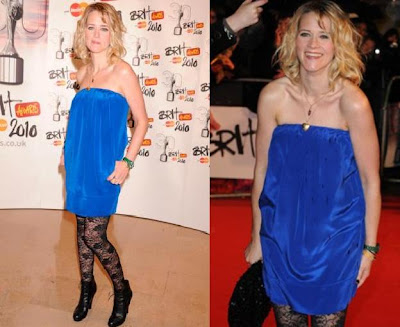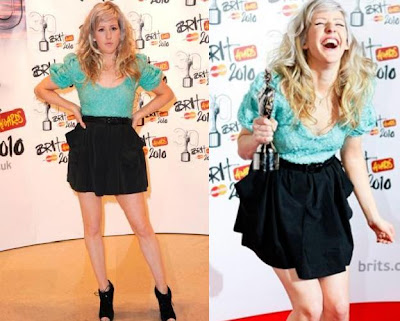Lengthening Lifespans With An Alkaline Lifestyle
The annual complication, "Health, United States, 2009," is published by the Centers for Disease Control and Prevention. The 574-page document reports that one of the biggest transformations in American health care has been the use of technology, especially imaging tests. MRI, CT and PET scans were ordered in 14 percent of emergency room visits in 2007, compared to less than 4 percent in 1996.
The CDC uses the most recent data available to offer a snapshot of American wellness. For 2009, the CDC used information from '06-'07.
Advances in technology are lengthening lifespans, but some experts say the quality of life isn't improving because people continue to have poor diet and exercise habits. Here, a hospital worker prepares a patient for an MRI.
The study offers several reasons to explain the increased use of technology. Machines are more readily available and more effective than they were in the 1990s. But they remain expensive: A single scan costs upwards of $500.
And safety hazards remain a concern. The report notes that imaging tests have been linked to increased rates of cancer, depending on radiation dose. A single CT scan can emit as much radiation as over 400 chest X-rays.
Scans aside, Americans are making use of new medical options. The percentage of those taking at least one prescription drug has soared, from 39 percent between 1988-1994 to 47 percent between 2003-2006. Hip replacements are up by 60 percent. The use of assisted reproductive technology has doubled.
More effective imaging tests, combined with other technological innovations like knee replacements and organ transplants, are credited with improving our life expectancy. A girl born today can anticipate living until age 80, whereas a baby boy will reach 75.
But some experts warn that this technology is improving lifespan, without improving quality of life. "The more societal resources we allocate to medical technology, the less we may devote to supporting the lifestyle practices that can actually build health at its origins," Dr. David L. Katz, director of the Prevention Research Center at Yale School of Public Health.
And quality of life is an area that Americans still need to work on. According to the 33rd edition of the CDC report:
Only 31 percent of us get adequate exercise, and the number hasn't moved in the last decade.
Rates of obesity have doubled since 1976. As of 2006, 35 percent of adult Americans were obese.
More Americans than ever live without health insurance -- 16.6 percent of those under 65. But we're facing more out-of-pocket spending on medical care -- an average of $6,200 per person.
Around 20 percent of American adults still smoke, a decrease of only one percentage point in the last decade.
As life expectancy rises alongside health care costs, the CDC warns that there's a limit to the benefits we can gain from life-saving technology. "Questions remain about how much improvement is possible when resources are scarce and costs continue to increase," the report says.
The potential for technology will no doubt reach a limit, because of the limits of rapid innovation or the cap on our own pocketbooks. If we want to see improvements in health, the CDC report illustrates, our lifestyles and diets are what really need to change.
According to Dr. Robert O. Young, Director of Research at the pH Miracle Living Center, "the key to extraordinary health and fitness throughout ones life is maintaining the alkaline design of the body with an alkaline lifestyle and diet. This lifestyle and diet focuses on daily exercise for at least 1 hour, alkaline food including liberal amounts of green fruit and vegetables, drinking at least 4 liters of alkaline water at a pH of 9.5 daily, ingesting at least 3 ounces of polyunsaturated oils daily and finally eating 12 grams of mineral salts every day."
Thursday 25th Feb - Today so far...
 Ok, so started off productively looking at page layouts for the March Issue...
Ok, so started off productively looking at page layouts for the March Issue...
 Then got distracted reading through Mary Kate & Ashley's "Influence" book... (love this book & BTW how stunning does Lauren Hutton look in this photo! - So natural)
Then got distracted reading through Mary Kate & Ashley's "Influence" book... (love this book & BTW how stunning does Lauren Hutton look in this photo! - So natural) Opened a package and got very excited that the Lilya Top I ordered from AustralianFlavour had arrived! Received approval from my daughter when I put it on. So happy that the weather is slightly cooler today so I can wear it with leggings...
Opened a package and got very excited that the Lilya Top I ordered from AustralianFlavour had arrived! Received approval from my daughter when I put it on. So happy that the weather is slightly cooler today so I can wear it with leggings... Started thinking about the Nookie 'Blondie' Coat I have on order... It may need to get much colder to wear this one so I'm happy to wait - very excited though (yes - even have a picture printed out..)
Started thinking about the Nookie 'Blondie' Coat I have on order... It may need to get much colder to wear this one so I'm happy to wait - very excited though (yes - even have a picture printed out..)So it's only 9:30 and that's just a brief mention of a few of the things that distracted me so far today. Need to focus - 4 more days until the new issue needs to be uploaded... If I get distracted again I might post up some March preview pages later...
Food, Nutrition and the Prevention of Dis-Ease
- What are phytonutrients and where are they found?
- What are the major classes of phytonutrients?
- How do phytonutrients protect against acidic dis-eases?
- What is the evidence that fruit and vegetable consumption protects human health?
- Are Americans eating enough fruits and vegetables?
- What is the present state of phytonutrient research?
1. What are phytonutrients and where are they found?
The term "phyto" originated from a Greek word meaning plant. Phytonutrients are certain organic components of plants, and these components are thought to promote human health. Fruit, vegetables, grains, legumes, and nuts are rich sources of phytonutrients. Unlike the traditional nutrients (protein, fat, vitamins, minerals), phytonutrients are not "essential" for life, so some people prefer the term "phytochemical".
2. What are the Major Classes of Phytonutrients?
Some of the common classes of phytonutrients include:
About Carotenoids
Of all the phytonutrients, we probably know the most about carotenoids, the red, orange and yellow pigments in fruit and vegetables. The carotenoids most commonly found in vegetables (and in plasma) are listed below along with common sources of these compounds. Fruit and vegetables that are high in carotenoids appear to protect humans against certain cancerous conditions, heart disease and age related macular degeneration.
Carotenoid
Common Food Source
alpha-carotene
carrots, grasses, sprouts
beta-carotene
leafy green and yellow vegetables (eg broccoli, sweet potato, pumpkin, carrots), grasses, sprouts
beta-cryptoxanthin
citrus, peaches, apricots, sprouts
lutein
leafy greens such as kale, spinach, turnip greens, grasses, sprouts
lycopene
luctene
tomato products, pink grapefruit
avocado products
zeaxanthin
green vegetables, citrus, grasses, sprouts
For a more detailed discussion of carotenoid content of fruit and vegetables see Chug-Ahuja et al, Journal of the American Dietetic Association, 1993;93:318 and Mangels et al. Journal of the American Dietetic Association, 1993;93:284-296. For carotenoid values of specific foods see the USDA-NCC Carotenoid Database for U.S. Foods on the website of the Nutrient Database Laboratory.
About Polyphenols
Polyphenolic compounds are natural components of a wide variety of plants; they are also known as secondary plant metabolites. Food sources rich in polyphenols include onion, pine bark, apple, tea, red grape, grape juice, strawberries, raspberries, blueberries, cranberries, and certain nuts. The average polyphenol / flavonoid intake in the U.S. has not been determined with precision, in large part, because there is presently no U.S. national food database for these compounds. (USDA scientists and their colleagues are in the process of developing a database for foods rich in polyphenols.) It has been estimated that in the Dutch diet a subset of flavonoids (flavonols and flavones) provide 23 mg per day. Earlier estimates of dietary intake that approximated 650 mg per day (Kuhnau, World Review of Nutrition and Dietetics, 1976;24:117) are generally thought to be too high as the estimate was based on data that were generated by "old" (less specific) methodology. Scientists at the Food Composition Laboratory, Beltsville Human Nutrition Research Center are currently developing new methodology for the accurate measurement of polyphenols in foods.
Polyphenols can be classified as non-flavonoids and flavonoids. The flavonoids quercetin and catechins are the most extensively studied polyphenols relative to absorption and metabolism.
Nonflavonoids
Sources
ellagic acid
strawberries, blueberries, raspberries
coumarins
Flavonoids
Sources
anthocyanins
fruit, pine bark, grasses, sprouts
catechins
grape, grape seed
flavanones
citrus
flavones
fruit, vegetables, grasses and sprouts
flavonols
fruit, vegetables, grasses and sprouts
isoflavones
soybeans, soy sprouts
3. How do phytonutrients protect against disease?
The following are commonly proposed mechanisms by which phytonutrients may protect human health. More research is needed to firmly establish the mechanisms of action of the various phytochemicals.
Phytonutrients may:
- serve as antioxidants or anti-acids
- supports immune response in helping maintain the integrity of the internal environment
- enhance cell-to-cell communication
- reduce estrogen as an acidic waste product of reproductive function
- convert to vitamin A (beta-carotene is metabolized to vitamin A)
- cause cancerous cells to biologically transform (apoptosis)
- repair DNA damage caused by smoking and other toxic exposures
- detoxify carcinogens through the activation of the cytocrome P450 and Phase II enzyme systems
- chelate environmental, dietary and metabolic acids that cause all sickness and dis-ease.
4. What is the evidence that fruit and vegetable consumption protects human health?
Evidence that fruit and vegetable consumption protects human health is accumulating from large population (epidemiological) studies, human feeding studies, and cell culture studies. Listed below are a few selected population studies from the literature linking fruit and vegetable consumption to health. For an excellent review concerning vegetables, fruit and cancer prevention, see Steinmetz and Potter, Journal of the American Dietetic Association 1996;96:1027.
See the World Cancer Research and American Institute for Cancer Research 10 year study on Food, Nutrition, and the Prevention of Cancer: a Global Perspective.
Evidence that Carotenoids are Protective
Fruit and vegetable consumption has been linked to decreased risk of stroke -- both hemorrhagic and ischemic stroke. Each increment of three daily servings of fruit and vegetables equated to a 22% decrease in risk of stroke, including transient ischemic attack (Gillman et al. Journal of the American Medical Association. 1995;273;1113).
Elderly men whose intake of dark green and deep yellow vegetable put them in the highest quartile for consumption of these vegetables had about a 46% decrease in risk of heart disease relative to men who ranked in the lowest quartile. Men in the highest quintile had about a 70% lower risk of cancer than did their counterparts in the lowest quintile. The differences in vegetable consumption between high and low intake rankings was not striking. Men in the highest quartile or quintile consumed more than two (>2.05 and >2.2) servings of dark green or deep yellow vegetable a day; those in the lowest quartile or quintile consumed less than one serving daily (<0.8>
Consumption of tomato products has been linked to decreased risk of prostate cancer. Men in the highest quintile for consumption of tomato products (10 or more servings a week) had about a 35% decrease in risk of prostate cancer compared to counterparts whose consumption put them in the lowest quintile (1.5 or fewer servings of tomato products a week) (Giovannucci et al. Journal of the National Cancer Institute 1995;87:1767).
People in the highest quintile for consumption of spinach or collard greens, plants high in the carotenoid lutein, had a 46% decrease in risk of age-related macular degeneration compared to those in the lowest quintile who consumed these vegetables less than once per month (Seddon et al. Journal of the American Medical Association. 1994;272:1413).
Evidence that Polyphenols are Protective
Flavonoid consumption has been linked to lower risk of heart disease in some, but not all, studies. Elderly Dutch men in the highest tertile of flavonoid intake had a risk of heart disease that was about 58% lower than that of counterparts in the lowest tertile of intake. Those in the lowest tertile consumed 19 mg or less of flavonoids per day, whereas those in the highest tertile consumed approximately 30 mg per day or more (Hertog et al. Lancet. 1993;342:1007). Similarly, Finnish subjects with the highest quartile of flavonoid intake had a risk of mortality from heart disease that was about 27% (for women) and 33% (form men) lower than that of those in the lowest quartile (Knekt et al. British Medical Journal. 1996;312:478).
However, in other studies the protective effect of flavonoids could not be confirmed. For Welch men, flavonol intake did not predict a lower rate of ischemic heart disease and was weakly positively associated with ischemic heart disease mortality (Hertog et al. American Journal of Clinical Nutrition. 1997;65:1489). For U.S. male health professionals, data did not support a strong link between intake of flavonoids and coronary heart disease (Rimm et al. Annals of Internal Medicine. 1996;125:384).
5. Are Americans Eating Enough Fruit and Vegetables?
An excellent source of information on fruit, vegetable and grain intake of Americans is USDA's 1994/96 Continuing Survey of Food Intakes by Individuals conducted by the Food Surveys Research Group, Beltsville Human Nutrition Research Center. The following information comes from that survey
.
About Vegetable Intake
On average, Americans consume 3.3 servings of vegetables a day. However, dark green vegetables and deep yellow vegetables each represent only 0.2 daily servings.
On any given day, about 49% of the population consumes at least the minimum number of servings of vegetables recommended (3 servings per day); 41% consume the number of servings recommended based on caloric intake (3 servings per day for those consuming less than 2200 calories, 4 servings per day for those consuming 2200-2800 calories, 5 servings per day for those consuming 2800 calories or more). About 10% of the population consumes less than one serving of vegetable per day.
About Fruit Intake
On any given day about 29% of the population consumes at least the minimum number of servings of fruit recommended (2 servings per day); 24% consume the number of servings recommended based on caloric intake (2 servings per day for those consuming less than 2200 calories, 3 for those consuming 2800 calories, 4 for those consuming 2800 calories or more). About 48% consume less than one serving of fruit a day.
6. What is the Present Status of the Art of Phytonutrients Research?
Population studies have linked fruit and vegetable consumption with lowering the risk for chronic diseases including specific cancerous conditions and heart dis-ease. However, media and consumer interest in phytonutrients and functional foods is far ahead of established proof that documents the health benefits of these foods or food components for humans. Phytonutrients research is experiencing remarkable growth. Hopefully, more specific information on phytonutrient consumption and human health will be forthcoming in the near future. For now, it appears that an effective strategy for reducing risk of cancerous conditions and heart dis-ease is to increase consumption of alkalizing, electron-rich phytonutrient-rich foods including green fruit, vegetables, grasses, seeds, nuts and sprouts.
Sensational Fashion During the BRIT Awards 2010
 As the BRITs Academy deliberate and cast their votes at the end of a groundbreaking year in music, The BRIT Awards Nominations Launch moves to a brand new venue for what will be a bigger and even more exciting event. As the award nights goes by, the BRIT Awards was finished successfully because of lot of well-known entertainment personalities especially in Music entertainment are attended the event. Many artists won awards such as Lily Allen, Cheryl Cole, Dizzee Rascal, Lady Gaga, and amny more. As Lady Gaga set her record of having 3 awards on the said awarding event, she acclaimed again another outraging eccentric fashion statement of her own. No wonder that she made another unusual fashion style that only known as Lady Gaga's fashion. Well, let's take a look on
As the BRITs Academy deliberate and cast their votes at the end of a groundbreaking year in music, The BRIT Awards Nominations Launch moves to a brand new venue for what will be a bigger and even more exciting event. As the award nights goes by, the BRIT Awards was finished successfully because of lot of well-known entertainment personalities especially in Music entertainment are attended the event. Many artists won awards such as Lily Allen, Cheryl Cole, Dizzee Rascal, Lady Gaga, and amny more. As Lady Gaga set her record of having 3 awards on the said awarding event, she acclaimed again another outraging eccentric fashion statement of her own. No wonder that she made another unusual fashion style that only known as Lady Gaga's fashion. Well, let's take a look on Lady Gaga @ Brit Awards
 The Sugababes @ Brit Awards
The Sugababes @ Brit Awards Alesha Dixon @ Brit Awards
Alesha Dixon @ Brit Awards Cat Deeley @ Brit Awards
Cat Deeley @ Brit Awards Florence Welch @ Brit Awards
Florence Welch @ Brit Awards Abbey Clancey Kimberly Walsh and Jameela Jamil @ Brit awards
Abbey Clancey Kimberly Walsh and Jameela Jamil @ Brit awards
Alicia Keys @ Brit awards

Edith Bowman @ Brit awards

Cheryl Cole @ Brit Awards

Ellie Goulding @ Brit awards

Courtney Love @ Brit awards

Alexandra Burke @ Brit Awards

Denise Van Outen @ Brit awards

Fearne Cotton @ Brit Awards

Emma Roberts @ Brit awards

Geri Halliwel @ Brit Awards

Gabriella Cilmi @ Brit Awards

Kylie Minogue @ Brit Awards

Holly Willoughby @ Brit Awards

Jodie Kidd Sharleen Spiteri and La Roux @ Brit awards

Katherine Jenkins @ Brit Awards

Pixie Lott and Samantha Fox @ Brit awards

Natasha Khan @ Brit awards

Leona Lewis @ Brit awards

Lily Allen @ Brit awards

Trans-seasonal Outfit Inspiration
At the moment I'm working on the March Issue of Mylookbook which is going to be all about ‘trans-seasonal’ style. A guide to get you through the time of year where the weather can go through 4 different season’s in one day and it seems no matter what you wear that by lunch time you’ll be cursing your outfit choice. What’s a girl to do?
Some outfit ideas which helped me this week were direct from Shopbop, totally perfect for this crazy weather & styled flawlessly. Big ticks for every single one of these looks...
 Having always been a 'dress' girl, shorts a growing on me more and more at the moment. If it's glamming them up with a pair of heals, smart casual floaty blouse and brogues style (as pictured), or a simple singlet & sandals, there are so many amazing looks that can be created. Image above from the Shopbop's 'Khaki' lookbook
Having always been a 'dress' girl, shorts a growing on me more and more at the moment. If it's glamming them up with a pair of heals, smart casual floaty blouse and brogues style (as pictured), or a simple singlet & sandals, there are so many amazing looks that can be created. Image above from the Shopbop's 'Khaki' lookbook Casual jacket, rolled up boyfriend jeans, tshirt, scarf & brogues, a perfect transeasonal look, just peel off or put back on the layers as the temperature requires it..
Casual jacket, rolled up boyfriend jeans, tshirt, scarf & brogues, a perfect transeasonal look, just peel off or put back on the layers as the temperature requires it.. Jumpsuit, tights, boots and cardy... love
Jumpsuit, tights, boots and cardy... love
90's grunge - the dress & boots combo, love love love!
 I love everything about this complete look from the sharp shoulders to the perfectly toned in colours. Oh and the shoes... HOT!
I love everything about this complete look from the sharp shoulders to the perfectly toned in colours. Oh and the shoes... HOT!
2010 Winter Shoe Style
When it comes to boots in particular, embellishments are the key which include zips, laces, studs and embroidery. Lengths vary in extremes from ankle boots to seductive thigh high styles, and you can opt for either closed in or peep toe in a rainbow of colours.
I'm already sorting out my shortlist of Winter favourites, I know I'm being a little boring but dark colours always have my preference. I figure with so many different styles to chose from, at least if I have the colour sorted I can move on to finding the perfect style.
Here's this season's contenders.... (Ok so the Jimmy Choo's are on my 'fantasy' shopping list)..
 Wittner Allience boot $299.95 www.wittner.com.au
Wittner Allience boot $299.95 www.wittner.com.au Betts Zip Code Ankle Boots in Black $139.99 www.betts.com.au or perhaps I could be adventurous with grey...
Betts Zip Code Ankle Boots in Black $139.99 www.betts.com.au or perhaps I could be adventurous with grey... Siron Razor Zip Boot www.sirenshoes.com.au
Siron Razor Zip Boot www.sirenshoes.com.au Sportsgirl Stevie Ankle Boot $159.95 www.sportsgirl.com.au
Sportsgirl Stevie Ankle Boot $159.95 www.sportsgirl.com.au  Jimmy Choo Biker Boot US $1195 www.net-a-porter.com
Jimmy Choo Biker Boot US $1195 www.net-a-porter.com Marcs Washed Stud Leather Boot $259 www.marcs.com.au
Marcs Washed Stud Leather Boot $259 www.marcs.com.auJoin The Alkaline Movement!
I have profound gratitude for being able to study and work with Dr. Young at the pH Miracle center. He is truly a pioneer and I believe, one of the most learned men about medicine and the human body.
I am a licensed naturopathic doctor and have been going to medical seminars for over 20 years. The microscopy courses I have taken have by far, been the best training that I have ever attended. Live blood analysis is one of the most valuable tools that we have to see the quality of the blood and the overall health of the body. It can reveal patterns of disease before they manifest. This is truly preventative medicine.
Live blood analysis can also guide you through a holistic health program, showing the effects on your blood. People waste hundreds and thousands of dollars on natural health products and programs that don't work. With live blood analysis, you can see whether or not the supplements and diet you are following are really benefiting your body, actually saving you money.
I would encourage anyone who is thinking about learning more about the new biology to attend the training or come to a retreat to find out more.
The microscopy course is not just for doctors!! Anyone can learn.
Here's what else I liked about the courses:
Dr. Young is generous. I was surprised that he gave us all of the lectures and power point presentations he has developed over the years. You are given all the tools to share this information with others in a powerful way. Many people who teach seminars give you bread crumbs and try to sell you on their next course. Dr. Young gives you everything he has, freely.
Dr. Young is FUNNY. We had a blast. I have never laughed so hard in my life, and usually do on a daily basis while working at the ranch. A good sense of humor is a sign of a healthy person. Laughing keeps you alkaline and healthy!
Dr. Young really lives the lifestyle. Just being with him is an inspiration. He starts at 7 am with one hour of yoga, then runs for 30 min or more. He glows with health, happiness and vitality.
While at the course, you have a retreat experience in a beautiful setting. No stuffy hotel room. You have three delicious alkaline meals per day and really get to experience the alkaline lifestyle.
You also receive one on one attention. While attending the course you have time to practice and receive individual help in making sure you know how to implement the tools.
You have to immerse yourself to really integrate these teachings. The new biology is a paradigm shift. It's much more than following a diet. It's about a whole different way of thinking. There are so many incorrect myths about the body. Dr. Young dispels these myths. People leave the seminar saying it has totally changed their life.
I have witnessed many "so called" medical miracles while working at the pH miracle center. These were actually not miracles at all, but merely the application of the principles of health which Dr. Young teaches. If you learn these principals and apply them to your life, you can have vibrant health.
What are the gifts you receive from the New Biology?
Freedom from fear.
If you know how your body works and you take care of it, you won't be sick. If you maintain the alkaline design of the body, give it the fuel it needs and stop taking in acidic foods and drinks, you will not get infections. You don't need to be afraid of every new supposed flu or pandemic that is in the news.
Empowerment
You will know what to do to achieve and maintain health. Its up to you. You have simple and easy tools. Just measuring you urine pH shows you every day what is going on in your body and how to adjust your diet and lifestyle.
Live blood analysis has been the best addition to my practice. It is either an affirmation of good lifestyle habits or a wake up call to make serious changes. People are truly inspired to make positive changes in their lifestyle after seeing their blood.
Join the alkalarian movement! Become part of the pH Miracle Family.
If you have questions about attending the course or retreats, feel free to call at:
760-751-8321
or you can contact me at:
Matea Polisoto, N.D.
drmatea@phmiracleliving.com
www.drmatea.com
858-779-9120
Valentine Fashion of Celebrities
 Valentine's Day was already past. As we can see celebrities celebrated it in different ways. Some are fresh and single, others yummy and romantic but in the end of the day, they are are alone in hates Valentines. Despite of that, Valentines can't ruined by emotional celebs but they just enjoy it just like an ordinary day of their lifestyle. Some celebrities are enjoying with their partners suiting-in in some romantic places around the world. Some single and separated celebrities are just enjoyed shopping of Designer clothes with their families. Here are some celebrities who are enjoyed and felt emotional during the Valentine celebrations:
Valentine's Day was already past. As we can see celebrities celebrated it in different ways. Some are fresh and single, others yummy and romantic but in the end of the day, they are are alone in hates Valentines. Despite of that, Valentines can't ruined by emotional celebs but they just enjoy it just like an ordinary day of their lifestyle. Some celebrities are enjoying with their partners suiting-in in some romantic places around the world. Some single and separated celebrities are just enjoyed shopping of Designer clothes with their families. Here are some celebrities who are enjoyed and felt emotional during the Valentine celebrations:
Angelina Jolie doesn't interested on Valentines, despite being with one of the sexiest men alive, Brad Pitt. While most women love the thought of V-Day, Jolie is not into it. Angelina just hanging with her siblings. 
Miley Cyrus isn't planning to anything special on her Valentines Day. In fact she just kept it an ordinary day of her as she made it busy in her work. Didn't she come for a date on her rumored partner Aussie actor Liam Hemsworth?
Office Star Jenna Fisher celebrates Valentines at her friend's daughter's Bat-Mitzvah. Nice Valentine ha. Where is your partner?
Model Karolina Kurkova has no date during Valentines. She claims that men are intimidated by her height and her outgoing personality. Anyone who want to date Karolina? 
Carmen Electra is also single this year. However, she plans to be in Europe, where the tradition is more subdued. Is she date someone in Europe during the special day? 
Bar Rafaeli, Leonardo DiCaprio's girlfriend, states that she doesn't go for the big bunch of flowers. "I like simple things," she says. Cool... Do Leonardo and Bar kept simple celebration?
And finally our first family the Obamas. President Obama apparently ordered the Triple Chocolate Enrobed Brownie Cake for his wife and daughters to celebrate.